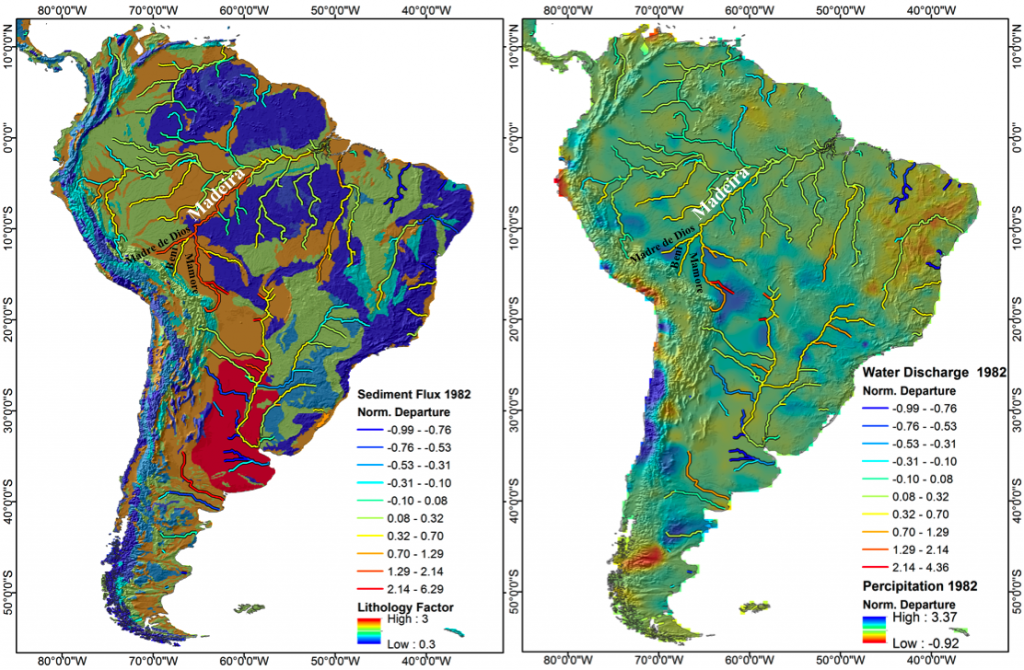Quantifying continental sediment flux is a fundamental goal of earth-system science. Ongoing measurements of riverine suspended sediment fluxes to the oceans are limited (<10% of rivers) and intra-basin measurements are even scarcer. Numerical models provide a useful bridge to this measurement gap and offer insight to past and future trends in response to human and environmental changes.
The WBMsed model is a spatially and temporally explicit (pixel scale and daily) global sediment flux model. It is a component within the Framework for Aquatic Modeling of Earth System (FrAMES), a spatially and temporally explicit multi-scale (local through global) hydrological/biogeochemical modeling scheme.
- S2S Seminar Presentation
- AGU2013 – Poster
- Model description and download (via CSDMS model repository)
- Model outputs download
Papers
- Moragoda, N., S. Cohen, (2020). Climate-induced Trends in Global Riverine Water Discharge and Suspended Sediment Dynamics in the 21st Century. Global and Planetary Change, 191, 103199. https://doi.org/10.1016/j.gloplacha.2020.103199 [pdf]
- Syvitski, J.P.M., S. Cohen, A.J., Kettner, G.R., Brakenridge, (2014), How Important and Different Are Tropical Rivers? Geomorphology, 227: 5-17. http://dx.doi.org/10.1016/j.geomorph.2014.02.029 [pdf]
- Cohen,S., A. J. Kettner, and J.P.M. Syvitski (2014), Global suspended sediment and water discharge dynamics between 1960 and 2010: Continental trends and intra-basin sensitivity, Global and Planetary Change, 115: 44-58, http://dx.doi.org/10.1016/j.gloplacha.2014.01.011. [pdf]
- Cohen, S., A. J. Kettner, J.P.M. Syvitski and B.M. Fekete (2013), WBMsed, a distributed global-scale riverine sediment flux model: Model description and validation, Computers & Geosciences, doi: 10.1016/j.cageo.2011.08.011 [pdf]

